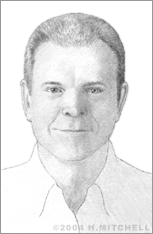Woody Norris
Elwood “Woody” Norris proves that there is no magic formula for becoming a successful inventor. Born in October 23, 1939 in Barrelville, Maryland, his mother and father had eighth-grade and third-grade educations, respectively, and Norris’s formal training stopped with high school. Nonetheless, his aptitude for electronics and entrepreneurship and his enthusiasm for creating new technologies has taken him to the top of his game. He has garnered over 100 patents and has created a variety of successful inventions to his credit in fields as diverse as sound technology, transportation, and medicine.
Norris learned about electronics by tinkering with radios in his youth and discovered a natural ability to understand how circuitry worked. He joined the Air Force, where he received some training in radar and electronics while working on triggers for bombs. He took a job at a nearby television station as a cameraman to supplement his military income and thought that he might pursue acting after his military service was complete. As a high school student, he had enjoyed participating in school productions and possessed some talent as a performer.
Instead, when Norris left the Air Force as Airman Second Class, he took a job at the University of Washington fixing electronic equipment. Within two years, he was named director of the campus’ Engineering Experiment Station. When a local company approached him, he took on the task of developing a sonar version of radar to listen to sounds inside the body. This “Doppler” tool emitted ultrasonic sound into the skin. Changes in the pitch of the sound waves that bounced back allowed physicians to “hear” movement inside the patient. The tool, licensed to Medical Development Corporation (which was later acquired by American Hospitals), was helpful to the development of the Sonogram, and, as Norris received company stock for the device, it also helped him make enough money to set up his own company.
Norris later sold a phonographic tone arm he had been working on and evolved a specialization in audio-related devices. His subsequent inventions included headsets for mobile phones, a hearing-aid-sized FM radio, and automobile audio systems. He also created a child locater device for tracking kidnapped children, an alarm worn by a person to alert him that his artificial hip is starting to separate, and a design for a vehicle dubbed the AirScooter®, an easy-to-fly, lightweight, inexpensive aircraft that has the ability to hover in one spot while a pilot gets his bearings. Norris has worked with NASA engineers to develop a prototype of the AirScooter, which he dreams will one day be viable as a commuter vehicle.
Norris is perhaps best-known for his work on what is known as HyperSonic Sound technology (HSS). HSS, or directional sound, targets a listener with sound waves similar to the way a laser beam directs light, so that the individual who is targeted is the only one who can hear it. As a result, different people in one room could feasibly listen to different music, watch totally different television shows or movies, or hear different advertising messages without the use of headphones.
In conjunction with American Technology Corp. (now Genasys Inc.), Norris worked on HSS and other audio technologies, including a compact sub-woofer and “sonic bullets,” which emit intense beams of sound at targeted individuals who pose a threat to others, giving them painful migraines.
Norris has been honored with numerous awards for his work including Product of the Year awards from Popular Science and Business Week, and the 1997 Award for Technological Innovation in the sound category from Discover Magazine. He won the prestigious $500,000 Lemelson-MIT Prize in 2005 for his HSS technology.
Norris founded and served as Director and President of Parametric Sound Corporation, now known as Turtle Beach Corporation, and also served as Chief Scientist at Turtle Beach. He also founded LRAD Corporation and was the Chairman of LRAD Corporation’s Board of Directors until 2010.
Most recently, Norris has been working on the BolaWrap, a handheld, non-lethal restraining device, currently being used by hundreds of law enforcement agencies. The small device works like a lasso, designed to detain people without causing severe injury. Norris expects to offer a range of new product solutions to “help meet the challenges of modern policing.”
Norris currently serves as Chief Technology Officer for Wrap Technologies Inc.


